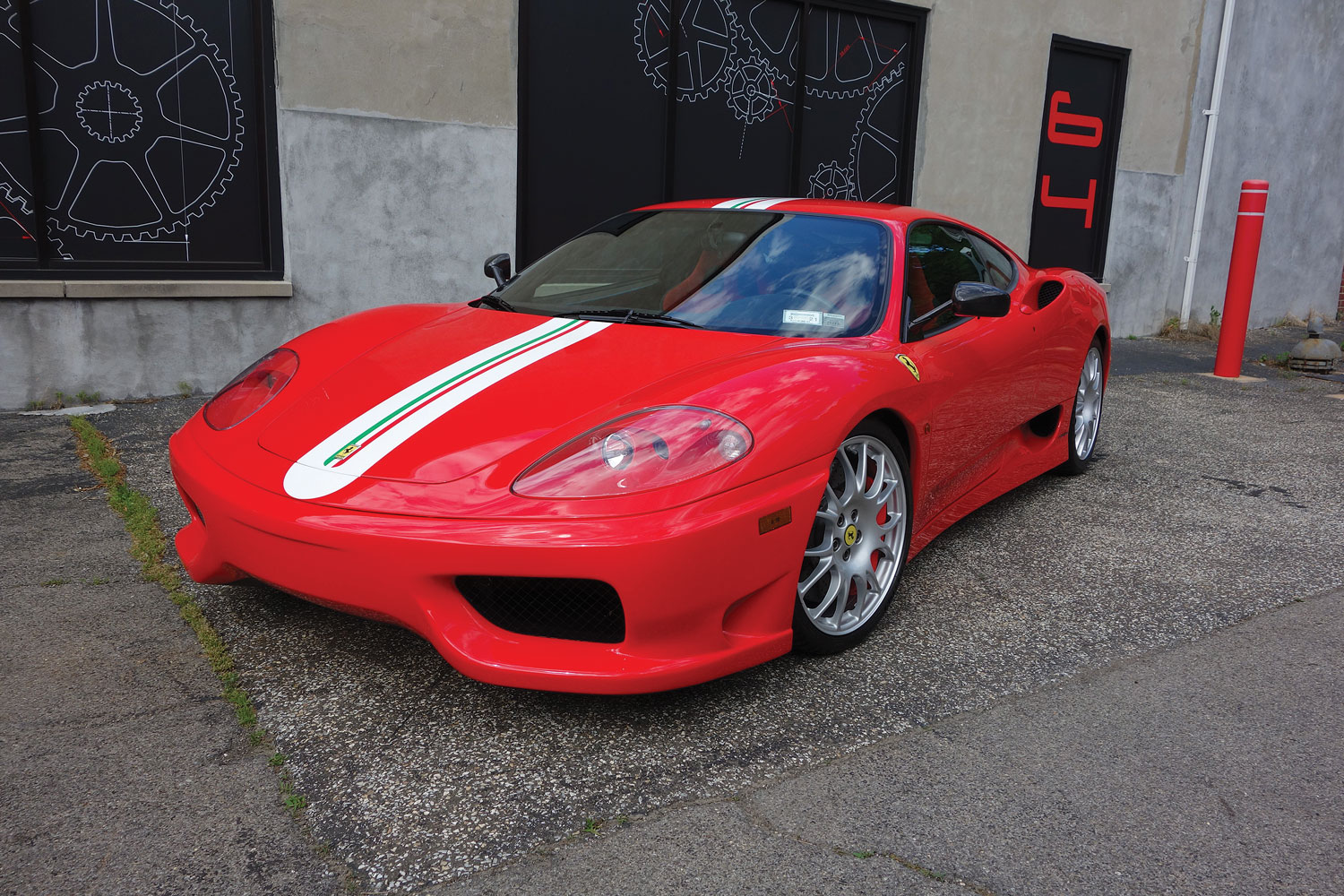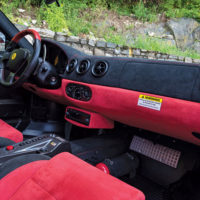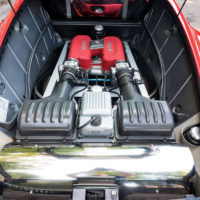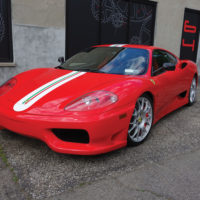SCM Analysis
Detailing
| Vehicle: | 2004 Ferrari 360 Challenge Stradale |
| Years Produced: | 2003–04 |
| Number Produced: | 1,288 |
| SCM Valuation: | $172,000 |
| Chassis Number Location: | Driver’s side door jamb |
| Engine Number Location: | In the V on the top of the block |
| Club Info: | Ferrari Club of America |
| Website: | http://www.ferrariclubofamerica.org |
| Alternatives: | 2002–03 Aston Martin DB7 Zagato, 2006–12 Porsche 911 GT3 RS, 2007 Chevrolet Corvette Z06 Ron Fellows ALMS GT1 Championship Edition |
| Investment Grade: | C |
This car, Lot 04176, sold for $257,500, including buyer’s premium, by Collecting Cars online on June 15, 2021.
Luca de Montezemolo was appointed CEO of Ferrari in 1991. In an April 2016 interview with Motor Sport magazine, he tells this colorful story: “I had given myself a present and bought a 348. It was terrible. So I’m at the first meeting as CEO and I asked to be presented with our range. ‘Okay, we have the Testarossa, we have the 348, very good car, innovative, eight cylinders,’ and I said, ‘Please stop. This is a shit car. So don’t say this to me; I am a client. I know what this car is like.’”
Thus began the push to use Ferrari’s F1 technology to make its V8 line the envy of the performance-car world.
Giant steps
The first step was the F355. Oh, what a car! With a 6-speed transaxle, five-valve technology, F1 aerodynamics and Ferrari’s first use of an F1 gearbox in a production car, it was great leap from the 348. Output jumped 80 horsepower, from 300 to 380 in the 355. Weight dropped by about 100 pounds, mostly through the use of aluminum body panels. The work was rewarded with an astonishing 0–62 mph time of 4.7 seconds, nearly a second quicker than the 348.
The F355 was all about the mechanicals and aerodynamics, but its replacement, the 360 Modena, was a study in weight management. Steel is over twice as heavy as aluminum, and Ferrari found it could make the car stronger and lighter by using aluminum in as many places as possible. The 360 featured a new chassis, body and suspension wishbones, all made from the stuff. This contributed to a nearly 250-pound weight reduction in a car that was 40% more rigid yet 10% larger than its predecessor.
The 360’s mechanical updates were more evolutionary than revolutionary. Engine displacement was slightly increased to 3.6 liters, with power bumped to 400 hp. New hydraulic-style lifters eliminated the need for valve adjustments. The increasingly popular F1 transmission was honed for faster shifting and better throttle control. The end result trimmed two-tenths from the 0–62 mph time, now down to 4.5 seconds.
Comfort matters
A major objective of the 360 project was increasing interior space. Ferrari wanted a more comfortable cabin for the occupants and room in the car to hold a golf bag. This was accomplished by making the car wider and installing a small shelf behind the seats.
But the 360 still looks less practical and more masculine than the 355. This is because the 360’s swoopy lines and low profile were a major departure from the previous era’s styling.
I have been a big fan of the Ferrari 360 Modena since its introduction. When I first laid eyes on the car, I saw it as a reinterpretation of the 246 Dino. Reading through Ferrari’s design criteria, I learned that I was correct: Pininfarina used Ferrari’s 250 LM and 246 Dino for inspiration.
The 360 Modena was produced for about five years, built both as a coupe and a spider, with both 6-speed manual or F1 transmissions. In all, about 17,500 360s were produced, making it one of Ferrari’s most popular cars.
Out with a bang
Ferrari ended its 348 series with the limited-production 348 Serie Speciale. It wrapped up the 355 run with a limited-production 355 Serie Fiorano. The 360 series similarly concluded with the 360 Challenge Stradale. Where the first two models featured a sporty cosmetic update intended to squeeze a few more sales out of an aged model, the 360 Challenge Stradale introduced a new genre of Ferraris.
It was derived from the 360s built to compete in the Ferrari Challenge spec series. These special Challenge cars were production cars modified to meet the rigors of track use. (Ferrari also built serious racing versions of the 360 for use in international GT competition.) The Challenge series gave Ferrari engineers extensive experience making the 360 both fast and reliable, which is what made the 360 Challenge Stradale extraordinary, in that it was a road (“stradale” in Italian) version of the track-focused iteration of the car.
Ferrari upgraded the engine, aerodynamics, brakes, F1 transmission and suspension setup for these cars. Horsepower was increased to 425, a gain of 25. Titanium springs and carbon brakes helped trim the Stradale’s weight by 250 pounds over a standard 360. A larger right-side F1 shift paddle ensured easier shifting during turns. Inside, carbon trim helped with the weight reduction and added a racy look. A new steering wheel and extensive use of Alcantara fabric continued the theme.
Ferrari continued its end-of-series special editions with the 430 Scuderia, 458 Speciale and 488 Pista. Each progressive model added increasingly more complex technology, or as Ferrari put it, “Extreme Technology for Special Emotions.” The 360 Challenge Stradale is on the analog end of these cars. It has few expensive high-tech components and can be serviced by many independent facilities. That should enhance its future desirability.
A picture is worth how many words?
Our subject car was sold on Collecting Cars, a U.K.-based online auction site with an international following. Collecting Cars has been in business about two years and claims to have sold over a quarter billion dollars’ worth of inventory; it has lately expanded into the U.S. market.
While its car descriptions are a bit brief, as with other online platforms plenty of photos accompany each car — in this case, a whopping 234. Of note is that the running commentary during bidding disappears from view once the auction is over.
The details for this Challenge Stradale were sparse, with fewer than 200 words describing its condition. For example, the brand of the tires was listed, but nothing about their age or tread. The car had a recent $9,000 service with receipt and was noted to have been refurbished by the seller.
This example was certainly the “right” color, and with 10k showing on the clock, its mileage was low but not too low. It featured the Challenge Stradale stripe (a $5,500 option) and it appeared to be in collector-quality condition. If it is indeed as nice as it seems, it would be a prime addition to any collector’s garage.
But $257,500 is still the top of the 360 Challenge Stradale market. A quick survey shows an average asking price of around $230,000, with recent auction sales closer to $200,000. The buyer paid up for the car but looks to have gotten a good one. He won’t regret his purchase. The seller, meanwhile, could have hoped for no better. ♦
(Introductory description courtesy of Collecting Cars.)



